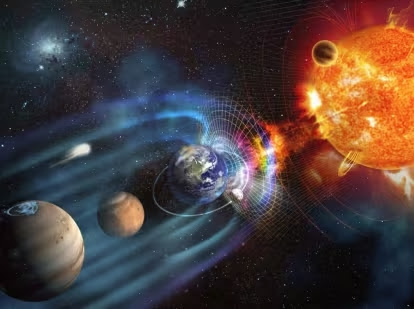GEOPHYSICAL!
This time our technical team we want to help with the reading of seismograms for all people who have studied the discipline of Seismology and have not had the opportunity to be in front of a seismogram. Briefly a seismogram is a recording medium where we can see clearly the majority of the time the earthquakes that may occur in different regions of a given location on earth.
The objective of the following information is to teach them what is to be done previously before the interpretation of seismograms and then record each earthquake. Before you can recognize the arrivals of P and S waves of each earthquake on seismograms we must first determine the arrival time of each earthquake to the seismic station installed in a given area, one must first understand that a seismogram is directly related to the time, so we can say that each seismogram is divided into hours, minutes and seconds.
To determine the time at which an earthquake on the seismogram, is noted previously the start time of the seismogram when installed in the rotary drum seismometer and when the needles of the same start to leave their mark on the seismogram.
So you can continue reading this information enters our Section of our Blog Science Seismology and Geophysics 2013 by clicking on the link http://geofisica-guszav.blogspot.com/p/sismologia.html
This time our technical team we want to help with the reading of seismograms for all people who have studied the discipline of Seismology and have not had the opportunity to be in front of a seismogram. Briefly a seismogram is a recording medium where we can see clearly the majority of the time the earthquakes that may occur in different regions of a given location on earth.
The objective of the following information is to teach them what is to be done previously before the interpretation of seismograms and then record each earthquake. Before you can recognize the arrivals of P and S waves of each earthquake on seismograms we must first determine the arrival time of each earthquake to the seismic station installed in a given area, one must first understand that a seismogram is directly related to the time, so we can say that each seismogram is divided into hours, minutes and seconds.
To determine the time at which an earthquake on the seismogram, is noted previously the start time of the seismogram when installed in the rotary drum seismometer and when the needles of the same start to leave their mark on the seismogram.
So you can continue reading this information enters our Section of our Blog Science Seismology and Geophysics 2013 by clicking on the link http://geofisica-guszav.blogspot.com/p/sismologia.html
































0 Comments:
Publicar un comentario
No olvides de escribir tu opinión personal de nuestro blog, una página o información que desees comprtir. Todos los éxitos para ti. Gustavo Zavala.